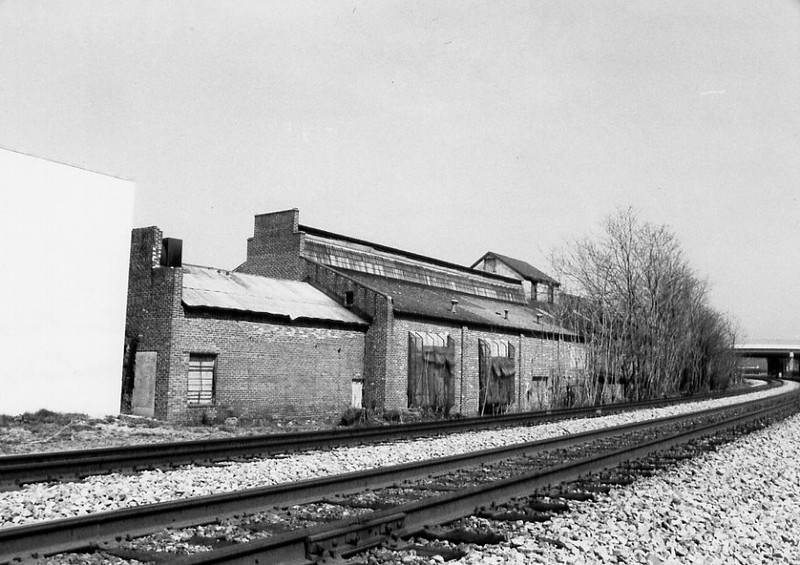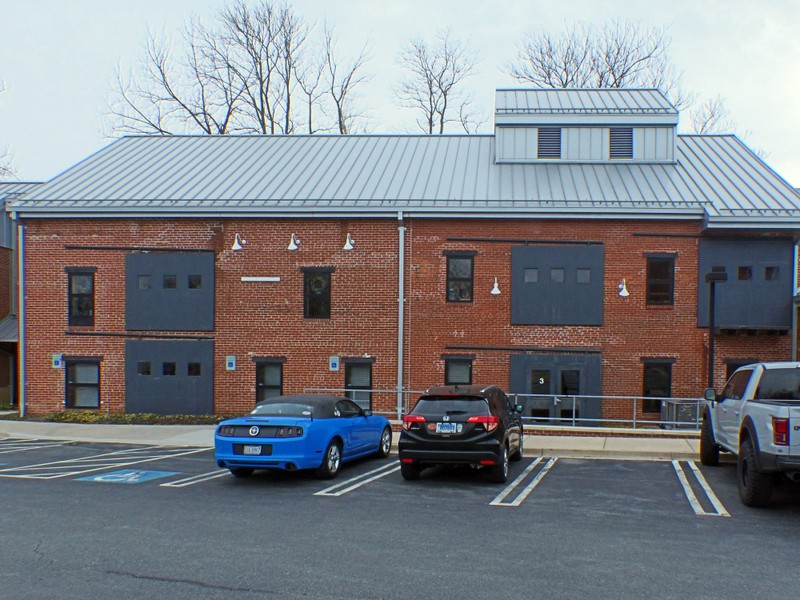Thomas & Company Cannery (1917-1963)
Introduction
Text-to-speech Audio
Images
Thomas & Company Cannery by John J. Cullinane, 1989 (reproduced under Fair Use)

The restored cannery by Allen C. Browne on HMDB.org, 2017 (reproduced under Fair Use)

Backstory and Context
Text-to-speech Audio
Already owners of other cannery operations, the Thomas family began building a Gaithersburg cannery in 1917 near the B & O Railroad tracks. The cannery building was brick and concrete with a tin roof. Within the cannery was a production line, vegetable preparation kettles, cookers, and a cooling canal; the complex also included a Pea Vinery which separated pods from vines and peas from pods. Pumpkin and corn were the original products of the cannery, then peas and corn. The cannery produced gallon cans of vegetables for wholesale or institutional purchase. During the canning season, the cannery employed about 200 people and was the largest industrial employer in the area. Other occupations related to the growing and distribution of the canned vegetables increased as well.
Most workers were local in the cannery until the 1950s, when it began hiring migrant workers, with the exception of employment of German prisoners of war during World War II. In 1956, the Jenkins Brothers Cannery Company of Frederick, Maryland acquired the Thomas Cannery and began employing the migrant workers from Florida. These workers lived in dormitories on site. A fire in a dormitory in 1958 killed an infant, resulting in the city of Gaithersburg ordering the cannery to remove the dormitories. Four years later, another fire in the cannery itself caused over $10,000 work of damage; moreover, an investigation found that 15 migrant workers had been housed in a chicken-coop-like structure inside the cannery.
The Jenkins Brothers Cannery Company had to remove this substandard living structure on threat of legal action. Losing their source of cheap labor, as well as a downtown in the agricultural development, resulted in the cannery operations ceasing. The smokestack and other parts of the complex were removed, and the warehouse rebuilt and leased to another company.
Rodgers Consulting undertook the restoration of the cannery building, and it is now leased space. In 1990, the building was added to the National Register of Historic Places. In 2005, the Annual Montgomery County Awards for Historic Preservation recognized the project with an award for "Renovation and Rehabilitation of a Historic Resource for Commercial Use."
Sources
Browne, Allen C. The Thomas Cannery, Historical Marker Database. September 22nd 2019. Accessed March 2nd 2020. https://www.hmdb.org/m.asp?m=101861.
Cullinane, John J. Thomas & Company Cannery, National Register of Historic Places Registration Form, Maryland Historic Trust. October 24th 1989. Accessed March 2nd 2020. https://mht.maryland.gov/secure/medusa/PDF/NR_PDFs/NR-1057.pdf.
Maryland Historic Trust. Thomas & Company Cannery, National Register Properties in Maryland. 2018. Accessed March 2nd 2020. https://mht.maryland.gov/nr/NRDetail.aspx?FROM=NRDBList.aspx&NRID=1059&COUNTY=&SEARCHTYPE=locationSearch&PROPNAME=&STREETNAME=&CITYNAME=gaithersburg&KEYWORD=.
Rodgers Consulting. Thomas Cannery, Portfolio. 2020. Accessed March 2nd 2020. https://www.rodgers.com/project/thomas-cannery/.
https://mht.maryland.gov/nr/NRDetail.aspx?FROM=NRDBList.aspx&NRID=1059&COUNTY=&SEARCHTYPE=locationSearch&PROPNAME=&STREETNAME=&CITYNAME=gaithersburg&KEYWORD=
https://www.hmdb.org/PhotoFullSize.asp?PhotoID=376867
